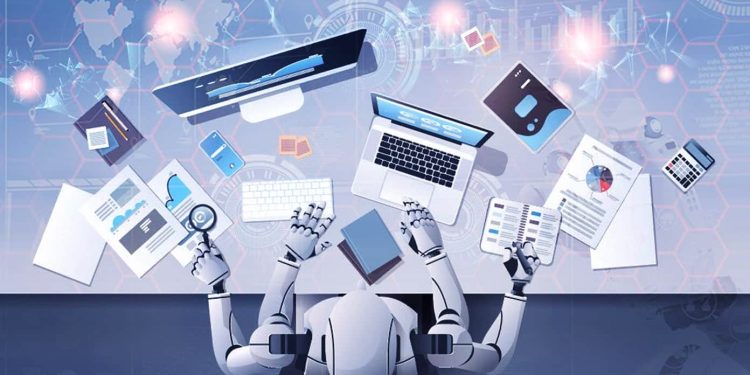Robotic Process Automation (RPA) frees the HR department from its repetitive and mundane tasks so they can focus on more strategic initiatives. In fact, according to UiPath, HR professionals are implementing RPA to reclaim up to 40% of their time and let employees concentrate on human-centric responsibilities. With this automation process, one can obtain 10x faster employee onboarding rates and witness a good number of ROI on payroll automation in only four months.
Similarly, according to Deloitte, approximately half the global HR firm’s key executives report that RPA results in 10-20% savings for the HR and the overall business procedures. In general, RPA offers several measurable benefits to Fortune 1000 companies. It includes:
- RPA accomplishes enhanced onboarding processing speed by automatically validating all the hire data and entering them into different systems.
- It augments regulatory compliance at nearly 100% by maintaining a running log of actions and performing automated compliance checks regularly.
- It lessens HR onboarding processing costs by assisting employees in managing tedious activities and robotically transcribing data from several sources in multiple systems.
- RPA drastically reduces onboarding time by finishing data entry for new hire onboarding, grouping, sharing new hire data over different frameworks, and producing required administrative reports quickly.
- It decreases error rates in onboarding processes by precisely updating personal and account data across various systems to ease processing.
RPA has Helped Global HR Firms in Several Ways
HR divisions are known for their tedious authoritative, and manual systems. This nature of HR makes it’s the best place to integrate RPA to simplify the organizational task. Several companies have reaped exceptional results out of HR technology. Some of such RPA use cases implemented in the HR department are shared below:
Global tax firm leveraged HR robots to speed up its process and save money. It used around 822 internal RPA bots; out of these, 23 are in the HR department. Eleven of their HR bots in the United States are projected to have a three-year revenue of over $4 million.
Similarly, one of the Swiss insurance providers uses RPA to slash their processing time by 85% in only four months. Before executing this innovation, six workers were physically preparing around 100,000 occasions each month, with a handling time of 60 hours. However, within seven weeks of integrating RPA into their HR department, they cut down their error rate to zero, reduced processing time by 85%, and manual work by 25%.
A Detailed RPA Use Case in the HR Department
Screening of Resumes and Candidate Shortlisting
Today, recruiters do not have to spend their time on resumes and application forms to fill in the job vacancy. Human resource robots help them by quickly assembling all the files and comparing them with the given list of job requirements. These requirements are viewed as a predefined set of rules to guide the selection process. The robot uses this guideline to notify the HR professionals about the best candidates, whereas those that do not match the rules will be sent rejection notifications.
Offer Letter Management
The offer letter of any company must comply with various sets of regulations and laws. Besides, they must be tailored to the specifically selected candidature. Although these regulations and rules are stored in various HR systems and databases, it still makes cross-checking and manual verification time-consuming and prone to mistakes. However, robots can help you in this area by quickly collating the needed data, creating the offer letter that complies with the law, and forwarding it to the right person.
Onboarding New Staff
When a new member joins your firm, it is crucial to collate the data from multiple systems to create a new user account, provide rights for company applications and tools, email address, etc. Data integration is used to determine the agreement between the new hire’s profile and preferences and the company procedures. RPA streamlines this entire process by automatically activating a specific template for a given user account’s onboarding process. It likewise settles on rule-guided choices, such as which credentials to allocate for the new member, which onboarding records to advance, and so on.
Tracking Employee Attendance
It is often challenging for HR professionals to accurately track employee attendance or review their time records if the company comprises vast workforces. Software robots can facilitate this perplexing cycle by automatically cross-checking employees’ self-reports against time signed in the HR records and detailing irregularities. These tools are also capable of recommending employees’ reallocation when confronted with significant absenteeism, thereby avoiding workflow disruptions.
Payroll Administration
Payroll management is one of the repetitive, monotonous tasks essential for companies of all sizes. It typically consists of large amounts of data entry work, which sometimes lacks integrity or visibility, and ends up with the high risk of error. Human resource robots can reduce this risk to zero and considerably lessen the waiting time with its automation procedure. Avoiding errors and delayed payments will undoubtedly have a positive impact on employee’s job satisfaction.
Employee Data Management
Employee data management is another strenuous task covering company regulations, payroll, and other benefits of current employees, past employees, contractors, applicants, and new hires. Managing these specifications requires arranged and steady actions across many databases with multiple formats. Besides, handling the constant flux of employee data is further challenging for HR professionals, especially if they opt for a manual process.
Robotic process automation streamlines this task by regularly cleansing the HR employee database and minimizing the risk of incorrect data entries. This process ensures data compatibility across various systems.
Wrapping Up
Robotic process automation is not the only fixated solution for the HR department. However, the use cases for RPA in this segment showcases how it is a feasible approach for extending ventures. Therefore, to be more competitive, one has to adopt RPA technology in its business and streamline rule-based HR procedures.







